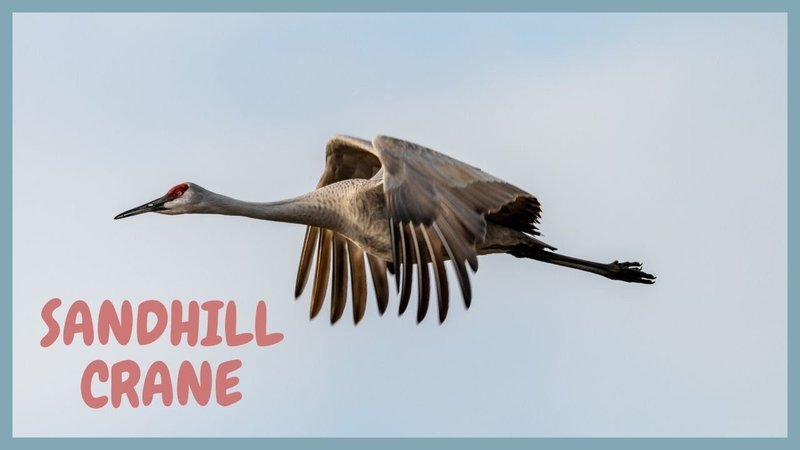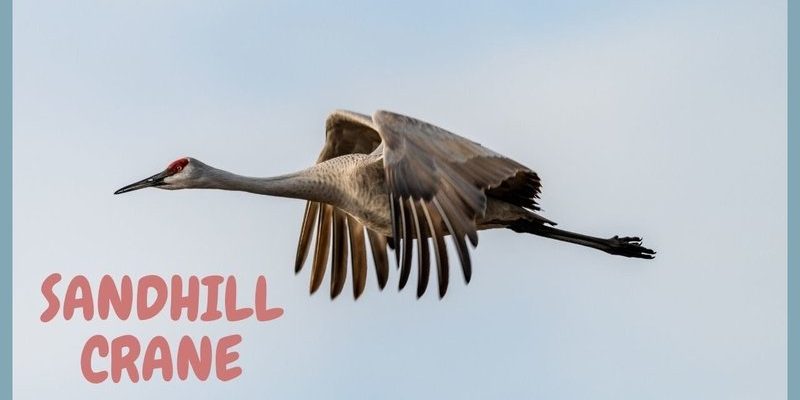
Understanding what these vocalizations mean can help you appreciate their behavior and the social structures within crane populations. This isn’t just a birdwatching curiosity; it’s a window into their lives. From courtship to alarm calls, each sound has a purpose. So, let’s dive deeper into the intriguing world of crane vocalizations and the messages they convey.
Types of Crane Vocalizations
Cranes are known for their diverse vocal repertoire. Each type of call serves a different purpose and can be broken down into several categories. Here are some of the main vocalization types:
- Bugling – This loud, resonant call is usually associated with courtship and nesting. It can carry for miles, making it a perfect way for cranes to attract mates.
- Grunts – These short, low sounds are often used for more intimate communication between mates or during parental care.
- Trumpets – A series of high-pitched calls that can indicate excitement or serve as a warning to others in the flock.
- Chattering – Quick, repetitive sounds that can signify alarm or the presence of threats.
Each of these sounds has its own unique characteristics, which can convey emotions or specific information. Think of it as a crane language, rich in nuance and tone.
The Role of Vocalizations in Courtship
One of the most captivating aspects of crane vocalizations happens during courtship. When it’s time to find a mate, cranes engage in elaborate displays that often include both dance and vocal calls. The bugling call plays a central role here, signaling their intent and displaying their vitality to prospective partners.
During courtship, cranes will often perform synchronized dances accompanied by these loud calls. It’s a beautiful sight! The vocalizations are not just about attracting a mate; they also serve as a way to establish bonds between partners. The more in-sync the vocalizations and movements, the stronger the connection between the cranes.
Here’s the thing: a crane’s ability to vocalize well can affect its success in attracting a mate. Just like in any social scenario, charisma and expressiveness can make all the difference. As they move together in a courtship dance, the harmony of their calls underscores their bond and commitment.
Alarm Calls: Protecting the Flock
Cranes are often seen as peaceful creatures, but they have a fierce protective side when it comes to their families. Alarm calls are essential for alerting others in the flock to danger. These calls are usually short and sharp, quickly communicating potential threats, whether they’re from predators or other intruders.
When you hear a crane emit a series of trumpets, it usually means that they’ve spotted something suspicious. This vocalization serves a dual purpose—it warns others while also possibly distracting the predator. Imagine a parent shouting for their kids to come inside during a storm; it’s a protective instinct fueled by love and urgency.
Cranes are social animals, and their vocalizations help maintain cohesion within the group. By keeping closely connected through calls, they can respond more effectively to threats and ensure the safety of their young.
Parent-Young Communication
Crane families are known for their close-knit group dynamics, and vocalizations play a significant role in nurturing relationships. Parents and their chicks have a unique way of communicating, using specific calls that help them stay connected, especially when they’re foraging or moving around.
The low grunts you hear from adult cranes are often directed at their young ones. These sounds offer reassurance and help guide the chicks as they learn to navigate their environment. It’s similar to how a parent might softly call out to a child in a crowded playground, making sure they feel safe and connected.
Additionally, chicks have their own calls to communicate with their parents. When they’re hungry or need attention, they’ll produce sounds that prompt their parents to respond quickly. This back-and-forth communication reinforces bonds and ensures the chicks are well cared for.
Vocalizations and Migration
As cranes migrate, vocalizations become an important tool for navigation and cohesion. During this time, you’ll often hear a mix of chattering and trumpeting as cranes travel in large flocks. These sounds are crucial for maintaining group dynamics in the air.
Why is this important? Imagine a road trip with friends—everybody needs to be on the same page about directions and stops. For cranes, vocalizations help them coordinate their movements and avoid disbanding during their long journeys. They also signify that all is well, helping to ease anxiety during migration.
Different species of cranes can have varied migration calls, which help members of the same species stay together. It’s a fascinating audio landscape that showcases not just their vocal ability, but also their instinctual understanding of community and teamwork.
Why Understanding Crane Vocalizations Matters
Now that you’ve explored the world of crane vocalizations, you might be wondering why it matters. Understanding these sounds can deepen our appreciation for these remarkable birds and their complex social structures. Moreover, it can have practical implications for conservation efforts.
Cranes are often indicators of ecological health. By monitoring their vocal behaviors, researchers can gain insights into their population dynamics and stress levels. If vocalizations decrease during certain seasons or in specific habitats, it can signal potential environmental issues.
In conservation, recognizing the importance of vocalizations helps prioritize habitats where cranes thrive. Protecting these areas not only benefits cranes but also supports other species within the ecosystem. So, by understanding their calls, we’re also advocating for broader environmental health.
Cranes are more than just beautiful birds; they’re masters of vocal communication. Their calls, from the softest grunts to the loudest bugles, reflect their emotions, relationships, and survival strategies. Understanding what these vocalizations mean enriches our connection to nature, reminding us of the intricate relationships that exist within ecosystems.
So, the next time you encounter a crane, take a moment to listen. Each sound tells a story, revealing the hidden complexities of their lives and the beauty of the natural world. Incorporating this knowledge can deepen your appreciation for not just cranes, but for all wildlife. Enjoy the symphony of nature—it’s a concert worth tuning into!

